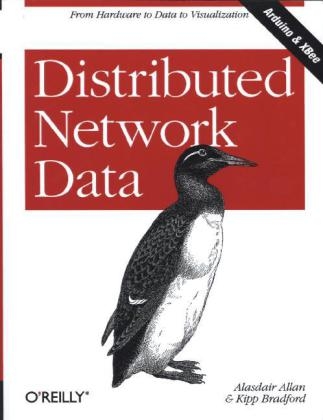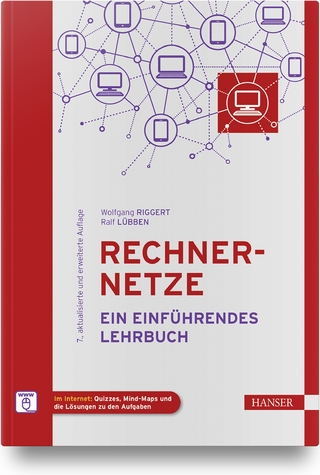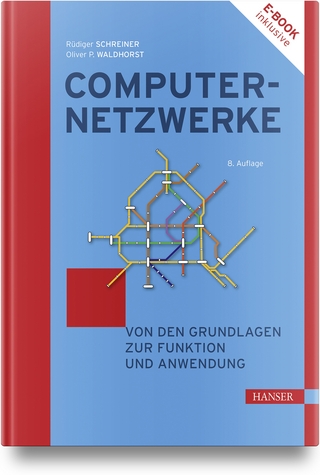
Distributed Network Data
O'Reilly Media, Inc, USA (Verlag)
978-1-4493-6026-9 (ISBN)
Authors Alasdair Allan and Kipp Bradford walk you through the entire process, from prototyping a simple sensor node to performing real-time analysis on data captured by a deployed multi-sensor network. Demonstrated at recent O’Reilly Strata Conferences, the future of distributed data is already here. If you have programming experience, you can get started immediately.
- Wire up a circuit on a breadboard, and use the Arduino to read values from a sensor
- Add a microphone and infrared motion detector to your circuit
- Move from breadboard to prototype with Fritzing, a program that converts your circuit design into a graphical representation
- Simplify your design: learn use cases and limitations for using Arduino pins for power and grounding
- Build wireless networks with XBee radios and request data from multiple sensor platforms
- Visualize data from your sensor network with Processing or LabVIEW
Alasdair Allan is a senior research fellow in Astronomy at the University of Exeter, where he is building an autonomous, distributed peer-to-peer network of telescopes that reactively schedule observations of time-critical events. He also runs a small technology consulting business writing bespoke software and building open hardware, and is currently developing a series of iPhone applications to monitor and manage cloud-based services and distributed sensor networks.
Kipp Bradford is an educator, technology consultant, and entrepreneur with a passion for creating new products as well as finding new applications for existing technologies. He was the founder or cofounder of start-ups in the fields of transportation, consumer products, HVAC, and medical devices, and holds numerous patents for his inventions. Kipp co-founded Revolution By Design, Inc, a non-profit education and research organization dedicated to empowerment through technology and co-organizes Rhode Island's mini Maker Faire. As the Senior Design Engineer and Lecturer at the Brown University School of Engineering, Kipp teaches several engineering design and entrepreneurship courses. He is the chair of the Rhode Island Entrepreneurship Faculty group and serves on the boards of The Steel Yard and AS220. He is also on the technical advisory board of MAKE Magazine and is a Fellow at the College of Design, Engineering and Commerce at Philadelphia University.
Chapter 1 Introduction to Arduino
Saying Hello in the Old World
The Arduino
Blinking an LED
Making a Serial Connection
Summary
Chapter 2 Getting Started
The Breadboard
The Sensor
Wiring the Breadboard
Writing the Software
Running the Software
Summary
Chapter 3 Adding Another Sensor
The Sensor
Wiring the Breadboard
Modifying the Software
Running the Software
Summary
Chapter 4 Finishing the Breadboard
The Sensor
Wiring the Breadboard
Modifying the Software
Running the Software
Adding Some LEDs
Making the Output Machine-Readable
Summary
Chapter 5 Moving from Breadboard to Prototype
The Prototype
Fritzing
Dropping Breadboard Crumbs
Let the Solder Flow
Summary
Chapter 6 Simplifying the Design
Arduino Proto Shields
Fritzing Revisited
Power and Ground
Cleaning up the Fritzing Diagram
Rules for Pin Power and Ground
Saving Power
Summary
Chapter 7 Building Point-to-Point XBee Networks
XBee Modules
How to Configure an XBee Series 1 Radio
Configuring Two XBee Radios
Connecting an XBee to an Arduino
Going Wireless with XBees
Summary
Chapter 8 Building Many-to-Point XBee Networks
Addressing for Multiple XBees
Addressing the Arduino
Individual Call and Response
Switching to Mesh Networks
Summary
Chapter 9 Visualizing with Processing
Processing
Reading Data From a File
Reading Data Directly From the Serial Port
Summary
Chapter 10 Visualizing with LabVIEW
LabVIEW
Simple LabVIEW with Arduino
Graphing the Data
Summary
Chapter 11 Going Further
ArduinoComment [AA2] We need more links here!
XBee Networking
Fritzing
EAGLE
Processing
LabVIEW
Data Visualization
Colophon
| Erscheint lt. Verlag | 23.4.2013 |
|---|---|
| Verlagsort | Sebastopol |
| Sprache | englisch |
| Maße | 178 x 233 mm |
| Gewicht | 283 g |
| Themenwelt | Mathematik / Informatik ► Informatik ► Netzwerke |
| Technik ► Elektrotechnik / Energietechnik | |
| Schlagworte | Diecimila, environmental data, sensor network, xbee, Arduino • Netzwerke • Verteilte Systeme |
| ISBN-10 | 1-4493-6026-2 / 1449360262 |
| ISBN-13 | 978-1-4493-6026-9 / 9781449360269 |
| Zustand | Neuware |
| Haben Sie eine Frage zum Produkt? |
aus dem Bereich


